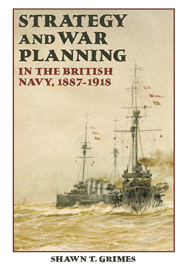Book contents
- Frontmatter
- Dedication
- Contents
- Preface
- Abbreviations
- Maps
- Introduction
- 1 The Naval Intelligence Department, Naval History, and Admiralty War Planning, 1887–1904
- 2 Early Planning against Germany, 1902–6
- 3 The Scandinavian Dimension and War Planning, 1906–7
- 4 War Planning, 1908–9
- 5 Probes into Admiralty War Planning, 1908–9
- 6 The Solidification of Dual Strategies, 1911–14
- 7 Offensive Planning and Operational Realities, 1914–18
- Conclusion
- Appendix I
- Appendix II
- Bibliography
- Index
6 - The Solidification of Dual Strategies, 1911–14
Published online by Cambridge University Press: 05 October 2013
- Frontmatter
- Dedication
- Contents
- Preface
- Abbreviations
- Maps
- Introduction
- 1 The Naval Intelligence Department, Naval History, and Admiralty War Planning, 1887–1904
- 2 Early Planning against Germany, 1902–6
- 3 The Scandinavian Dimension and War Planning, 1906–7
- 4 War Planning, 1908–9
- 5 Probes into Admiralty War Planning, 1908–9
- 6 The Solidification of Dual Strategies, 1911–14
- 7 Offensive Planning and Operational Realities, 1914–18
- Conclusion
- Appendix I
- Appendix II
- Bibliography
- Index
Summary
Admiral of the Fleet Sir A. K. Wilson's tenure as First Sea Lord (January 1910– December 1911) contributed little to the Admiralty's strategic policy compared to earlier administrations. The Navy's chaotic planning after 1910, however, was also attributable to Fisher's final actions as First Sea Lord. A proven planning system centred on the NID and the War College was terminated by his policies after the Beresford Inquiry. The Navy War Council firmly retrenched the Service chief 's prerogatives over all Admiralty planning. Yet neither Fisher nor McKenna could have foreseen the new Service head's autocratic approach in policy matters when they assured his ascension in 1910. Under Wilson, the Admiralty's strategy reflected his preferences from 1905 to 1909, including designs earlier condemned by the Ballard Committee and Wilson himself for North Sea close blockade and inshore operations. While Fisher and Wilson's strategic views were similar, the latter's adoption of these questionable proposals disrupted the consistency of naval war planning leading into the First World War.
Lacking Fisher's political aptitude, Wilson could not combat further probes into naval policy by the Cabinet, Army, and CID. As a result, defects in the Navy's war plans were revealed at the CID meeting over the Agadir crisis on 23 August 1911. Wilson's poor performance before this caucus led to the Army's ‘continental’ plan gaining wider acceptance, Churchill's replacing McKenna as First Lord, the institution of a Naval War Staff, and Wilson's removal.
- Type
- Chapter
- Information
- Strategy and War Planning in the British Navy, 1887-1918 , pp. 159 - 189Publisher: Boydell & BrewerPrint publication year: 2012

